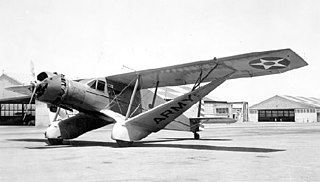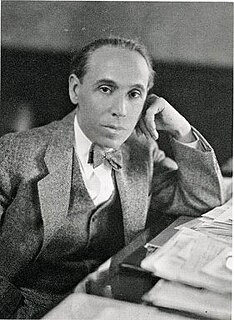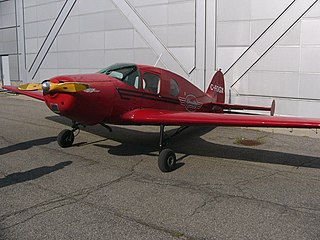
AviaBellanca Aircraft Corporation is an American aircraft design and manufacturing company. Prior to 1983, it was known as the Bellanca Aircraft Company. The company was founded in 1927 by Giuseppe Mario Bellanca, although it was preceded by previous businesses and partnerships in which aircraft with the Bellanca name were produced, including Wright-Bellanca, in which he was in partnership with Wright Aeronautical.

The Bellanca Aircruiser and Airbus were high-wing, single-engine aircraft built by Bellanca Aircraft Corporation of New Castle, Delaware. The aircraft was built as a "workhorse" intended for use as a passenger or cargo aircraft. It was available with wheels, floats or skis. The aircraft was powered by either a Wright Cyclone or Pratt and Whitney Hornet engine. The Airbus and Aircruiser served as both commercial and military transports.

The American Champion 8KCAB Decathlon and Super Decathlon are two-seat fixed conventional gear light airplanes designed for flight training and personal use and capable of sustaining aerobatic stresses between +6g and −5g. The Decathlon entered production in the United States in 1970 as a more powerful and stronger complement to the American Champion Citabria line of aircraft.

Giuseppe Mario Bellanca was an Italian-American aviation pioneer, airplane designer and builder, who is credited with many design firsts and whose aircraft broke many aviation records. He was inducted into the National Aviation Hall of Fame in 1973. The Bellanca C.F., the world's first enclosed-cabin monoplane, is on display at the National Air and Space Museum. Bellanca was known mostly for his long range aircraft which led the way for the advancement of international and commercial air transportation.

The Bellanca Viking and Super Viking are a series of single-engine, four-seat, high performance, retractable gear aircraft manufactured in the USA during the 1960s and 1970s. The aircraft developed through modifications of classic designs by the aviation pioneer Giuseppe Bellanca. A total of 1,356 Vikings have been produced with most production between 1968 and 1975.

The Bellanca CH-300 Pacemaker was a six-seat utility aircraft, built primarily in the United States in the 1920s and 1930s. It was a development of the Bellanca CH-200, fitted with a more powerful engine and, like the CH-200, soon became renowned for its long-distance endurance.
The Pacemaker name was applied to a number of related Bellanca aircraft in the 1920s and 1930s:

The Bellanca 14-7 and its successors were a family of light aircraft manufactured in the United States shortly before World War II.

The Bellanca YO-50 was a United States prototype observation aircraft, built for the United States Army in 1940. Typical for aircraft of its type, it was a high-wing braced monoplane with fixed tailwheel undercarriage and extensive cabin glazing. Its inverted "V" engine made it resemble its German equivalent, the Fieseler Storch.

The Bellanca 14-13 Cruisair Senior and its successors were a family of light aircraft that were manufactured in the United States by AviaBellanca Aircraft after World War II. They were a follow-up to the prewar Bellanca 14-7 and its derivatives.

The Bellanca 19-25 Skyrocket II was a prototype light airplane built in the United States in the 1970s. Despite its advanced design and exceptionally good performance, it never achieved certification or entered production.
The Bellanca CD was the first aircraft designed for the Maryland Pressed Steel Company, by the aircraft designer Giuseppe Mario Bellanca. The aircraft was also called the Bellanca C.D. or the "CD Tractor Biplane".

The Bellanca CE was the first aircraft designed for the Maryland Pressed Steel Company, by the aircraft designer Giuseppe Mario Bellanca. The aircraft was also called the Bellanca C.E. or the "CE Tractor Biplane".

The sole Wright-Bellanca WB-2, named Columbia, Miss Columbia, and later Maple Leaf, was the second in a series of aircraft designed by Giuseppe Mario Bellanca, initially for Wright Aeronautical then later Columbia Aircraft Corp.

The Wright-Bellanca WB-1 was designed by Giuseppe Mario Bellanca for the Wright Aeronautical corporation for use in record-breaking flights.

The Bellanca CF is an early enclosed high-wing monoplane designed by Giuseppe Mario Bellanca that led to a successful series of Bellanca aircraft. Bellanca was nominated for the Collier Trophy in 1922 for the CF design.

The Bellanca XSOE was a prototype American scout observation floatplane built for the United States Navy by the Bellanca Aircraft Company. It was never accepted by the Navy and only the prototype was built.

The Bellanca SE was an American carrier-based scout monoplane designed and built for the United States Navy by the Bellanca Aircraft Company.
August Bellanca (1880–1969) was an American labor activist who was a founder and three-time vice president of the Amalgamated Clothing Workers of America (ACWA). The ACWA was formed as an offshoot of United Garment Workers and was the result of tensions between the national union and urban locals. Bellanca served as vice president at intervals over a period of fifty years, from 1916-1934, 1946-1948 and also from 1952-1966.
















